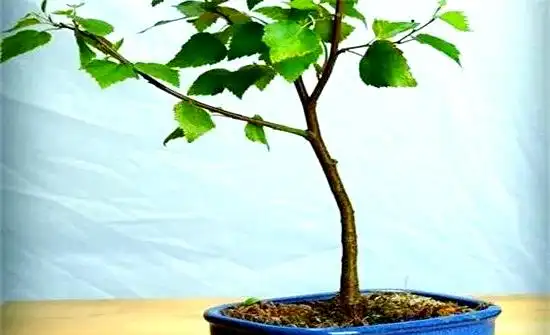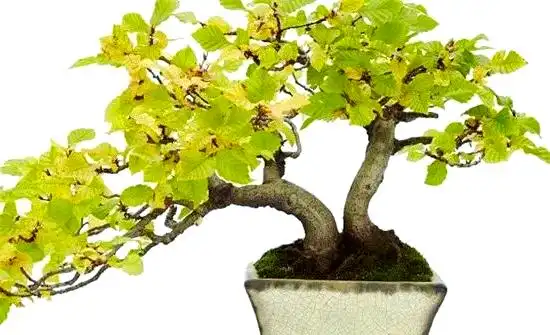How to cultivate white birch : Comprehensive guide
In the process of cultivating white birch, choosing the right soil is crucial. When raising potted plants, it is recommended to use a mixture of peat soil and sandy loam soil as the cultivation substrate, and add a suitable amount of sand and gravel to the bottom of the basin to ensure good drainage. During the seedling period, white birch should be avoided from direct exposure to strong light, and after autumn, sufficient light should be given to promote healthy growth. In addition, regular fertilization is also essential. The decomposed manure solution is applied once a month to provide necessary nutrients for white birch. Finally, always pay attention to keeping the soil moist, which is the key to the healthy growth of white birch.
Through these all-round breeding methods, we can better take care of white birch and make it grow healthily.
01 Soil selection for white birch breeding
When cultivating white birch, it is necessary to first provide it with a suitable soil environment. It is recommended to use a mixture of peat soil and sandy loam soil, and add sand and gravel as a base to enhance the drainage of the soil and ensure that white birch can grow healthily.
[Choose appropriate cultivation substrate]In order to ensure the healthy growth of white birch, it is recommended to use a mixture of peat soil and sandy loam soil, and add sand and gravel as a base to enhance drainage.
 [Consideration of soil drainage]
[Consideration of soil drainage] Keeping the soil moist is a key condition for the healthy growth of white birch. Therefore, during the breeding process, regular watering is needed to meet the water needs of white birch. At the same time, attention should also be paid to avoid excessive watering to avoid causing water in the soil and affecting the growth of white birch. Through reasonable watering management, the healthy growth of white birch can be ensured.

02 Light regulation in white birch culture
Light is an important factor affecting the growth of white birch. During the seedling stage, white birch should be avoided from direct light to ensure that it passes through this stage safely. After autumn, sufficient light can promote the growth and development of birch. Therefore, during the breeding process, appropriate light regulation needs to be carried out according to the needs of different stages.
[Precautions for lighting during seedling stage]During the seedling stage of birch, avoid direct strong light to prevent injury to the branches.
[Light demand after autumn]After autumn, sufficient light is needed to promote growth.

03 Fertilization management of white birch breeding
Fertilization is an important means to provide the nutrients needed by white birch. It is recommended to apply decomposed manure solution once a month to ensure that white birch receives sufficient nutrients to grow healthily.
[Fertilizer amount and timing]Birch growth requires sufficient nutrients. Organic fertilizer is applied once every half month, which is especially important in spring and summer; fertilization can be suspended during autumn dormancy.
[Selection of fertilizer types]When selecting fertilizers, priority should be given to organic fertilizers, such as decomposed animal manure or cake fertilizer, which can provide balanced nutrients to white birch.
04 Water requirements for white birch farming
Keeping the soil moist is a key condition for white birch to thrive. Therefore, during the breeding process, regular watering is needed to meet the water needs of white birch. At the same time, attention should also be paid to avoid excessive watering to avoid causing water in the soil and affecting the growth of white birch. Through reasonable watering management, the healthy growth of white birch can be ensured.
[Water supply principle]Since white birch needs to keep the soil moist, the amount of water should be controlled during the seedling period to prevent root rot, and the principle of watering a small amount of times should be followed during the growth period.
[Irrigation method to prevent stagnant water]When the birch tree grows its true leaves, it can be watered thoroughly at one time, as long as there is no stagnant water in the basin soil.
05 Key Points in White Birch Conservation
In the process of maintaining white Birch trees, there are several key points that need special attention. First, make sure that birch trees get enough water because they are not drought-tolerant. Secondly, appropriate control should be carried out when watering to avoid excessive root rot. In addition, follow the principle of watering in small quantities and multiple times to ensure that each watering reaches deep into the soil, but at the same time pay attention to avoid stagnant water.
[The necessity of weeding]After mature, the birch tree is larger and often attracts weeds to grow. Therefore, weed regularly to prevent weeds from competing for nutrients and space, especially during high summer temperatures.
[Timing and frequency of weeding]The best time to weed is when the soil is moist after watering, so that weeds can be uprooted more easily. Especially in summer, due to the high temperature and strong weed growth, we need to carry out weeding work 3 to 4 times; while in other seasons, we can do it once each.
